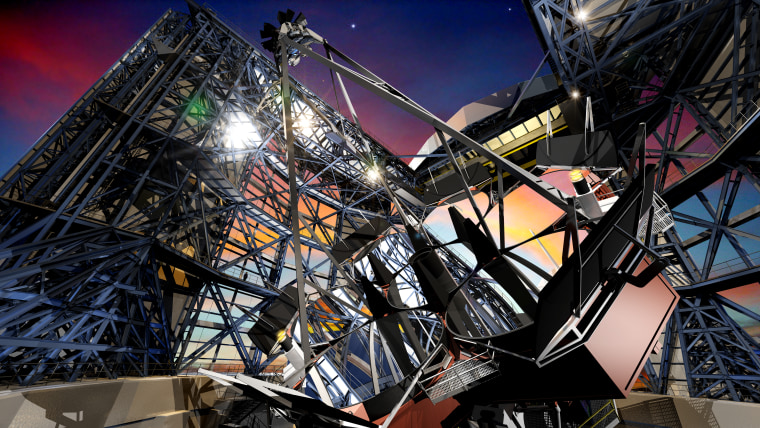In the driest desert on Earth, construction started Wednesday on a telescope larger than anything that exists today.
It's called the Giant Magellan Telescope (GMT). When finished in the early 2020s, it will stretch 85 feet in diameter and provide some of the highest resolution images yet of planets orbiting distant stars.
The GMT will serve as a complement to orbiting telescopes like the Kepler space observatory, which finds exoplanets by looking for dimming star light.
"It's relatively limited information," Patrick McCarthy, vice president of the Giant Magellan Telescope Corporation, told NBC News. "It can't tell you how massive a planet is or what it's made of. A large telescope on the ground can tell you all of that information."
Related: SETI Researchers Find No Sign of Aliens at KIC 8462852 ... Yet
As astronomers hunt for life on other worlds, space telescopes will look for promising planets, and the GMT will follow up with a more detailed analysis.
The GMT will also take some impressive pictures, with a resolution 10 times higher in some wavelengths than those taken by the Hubble Space Telescope.
Building a giant in the desert
Over the next decade, parts will be shipped to the construction site in Chile's Atacama Desert, which gets only 0.2 inches of rain a year in some places. Why put a telescope in such a hostile environment?
"Astronomy and water just don't mix very well," McCarthy said.
That is because water absorbs light in the infrared. In dry areas, telescopes can see starlight that would otherwise be blocked by the atmosphere. Being in the Atacama Desert also has other advantages, like fewer rainy and cloudy days to contend with.

Not only will the GMT be located in ideal stargazing territory, but it will come equipped with "adaptive optics" that will let astronomers change the shape of the telescope's seven 27-foot mirrors to compensate for distortions caused by the Earth's atmosphere.
McCarthy compared it to noise-canceling headphones that create soundwaves to offset intruding noises. The result are clearer photos with less interference, he said.
Scientists from the institutions funding the GMT — including Harvard, the University of Chicago, and the Korea Astronomy and Space Science Institute — along with Chilean astronomers will have first dibs when reserving telescope time, although it will be open to any astronomers with a qualifying research proposal.
The GMT should be built by 2021 and, after a little fine-tuning, operational by 2024 or 2025. When it's finished, it will be far larger than the Gran Telescopio Canarias, currently the largest telescope on Earth at 34 feet in diameter. But McCarthy suspects something bigger is on its way.
"If you look back all the way to when Galileo made his first telescope and plot the size of the largest telescope on Earth for those 400 years," he said, "it turns out that every 30 to 40 years, someone makes a telescope about twice as large as the one before."
